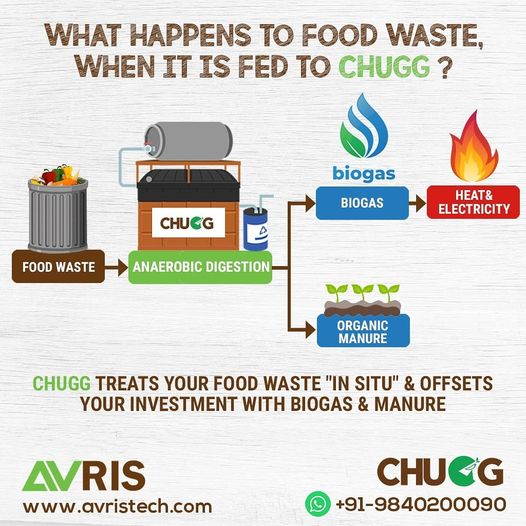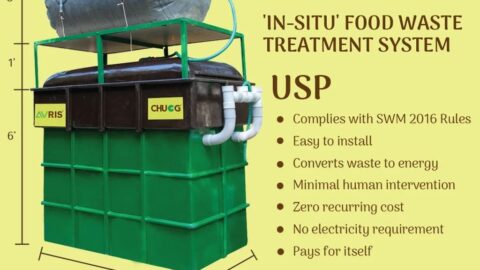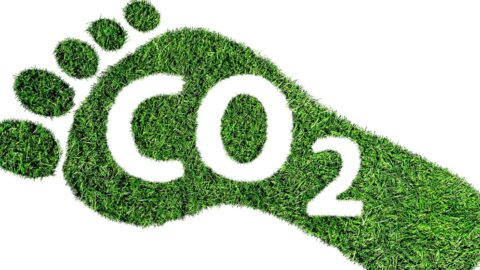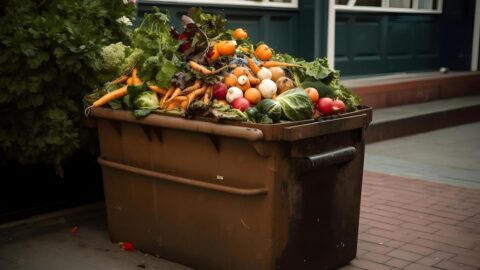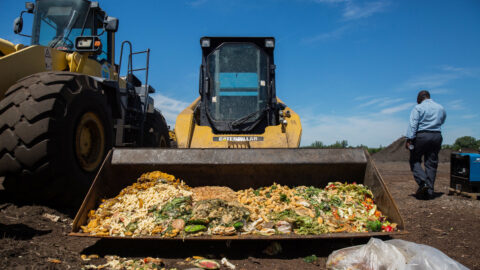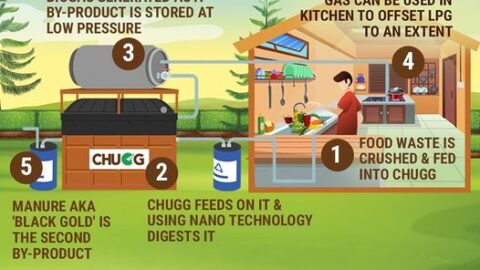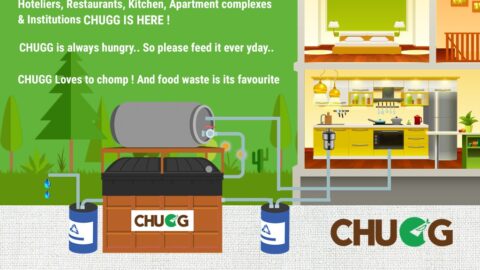The first known anaerobic digester has been built in 1859 in Bombay. The food waste and organic waste matter have been recycled long back from 10BC where biogas was collected and used to warm water. According to statistics, 30-40% of the food in India is wasted, almost 41 million tons of food waste was generated and only 6.3% of that waste was diverted from landfills and incinerators for composting. When we waste food, we are also wasting agricultural resources, water, and energy used. For example, food waste ends up devouring almost a fourth of our water supply in the form of uneaten food.
What is anaerobic digestion & Biogas?
Anaerobic digestion is a series of biological processes where food waste and organic waste matters are combined as one in a container known as an anaerobic digester. The term anaerobic means “absence of oxygen”. The anaerobic process can happen anywhere waste is dumped and compacted to create an airless environment i.e., without oxygen, during which microorganisms separate this natural matter and change it into biogas. When this biogas has been filtered at a biogas plant, the natural gas can be transformed into power, fuel, and nuclear power.
The end product Biogas is combusted to generate heat and electricity or can be even processed to produce renewable natural gas and transportation fuel. Other organic waste matters include livestock manure, municipal wastewater solids, food waste which are treated in the absence of oxygen to produce biogas. Nutrients in the liquid stream known as digested Bio-slurry are used in agriculture as fertilizer.
The anaerobic digester CHUGG- an innovative food waste treatment system developed by Avris Environment Technologies diverts all your organic waste matter and food waste from landfills to recycle it to produce Biogas just like any other unit. This makes food waste disposal and food waste management in India simple and hassle-free.
Process of anaerobic digestion
Organic waste matter is isolated from inorganic materials and fed to anaerobic digester CHUGG. Generally, an anaerobic digester consists of three types of microorganisms namely acidogenic microscopic organisms, acetogenic microbes, and methanogens. Microorganisms start to separate the organic waste matter into sugars and unsaturated fats, in a biochemical reaction called hydrolysis. Acidogenic microorganisms convert the sugars and amino acids into carbon dioxide, hydrogen, ammonia salts, and other natural acids. Acetogenic microbes convert the natural acids created in the previous step into more carbon dioxide, hydrogen, and ammonia salts. Methanogens convert the resultants of the last two stages into biogas comprised of 60% methane and 40 percent carbon dioxide. The byproduct Biogas is utilized to generate heat and electricity.
CHUGG-An innovative food waste treatment system in India processes organic matter, such as animal waste or wasted food, in the absence of oxygen and complies with SWM 2016 rules. This process happens inside a chamber called a digester. Organic waste matter is recycled to produce Biogas that comprises mostly methane and fertilizer that can be used for farming. CHUGG can be fed with any kind of food scraps, kitchen scraps, and garden trimming including meat, egg, and citrus fruits. Some types of waste matter process quickly. The waste matter that breaks down quickly produces more biogas.
Thus, CHUGG offers a valuable and innovative way to divert waste from the landfill
Benefits of installing CHUGG
- Converts waste to energy: CHUGG diverts your food and kitchen scraps from landfill and process it to produce biogas which can be used to generate heat/electricity.
- State of the art Nano-technology: It is Modular, compact, and consumes the least space. You can introduce extra units as and when your food wastage increases. Cycle’s food scraps at a quicker rate utilizing biological treatment.
- Simple TO INSTAL: Civil work is not required. Hence easy to install and relocate.
- Pays for itself as readily usable by-products: CHUGG produces gas and fertilizer which can balance your investment.
- Minimum human intervention: It is not very difficult to operate. CHUGG is automated and exceptionally user-friendly requiring an operation time of 15 – 30 minutes a day.
- No power required: It is a biological process & doesn’t utilize electricity to operate. It is odorless & nonpolluting.
How is CHUGG different from other systems?
- Portable and modular plant
- Plant positioning outside
- Byproduct Biogas can be used to offset LPG, whereas Digested Bio-slurry is rich in nutrients and can be used for farming.
- Carbon is positive as it doesn’t utilize energy and produces biogas for cooking and organic manure.

